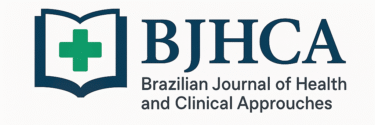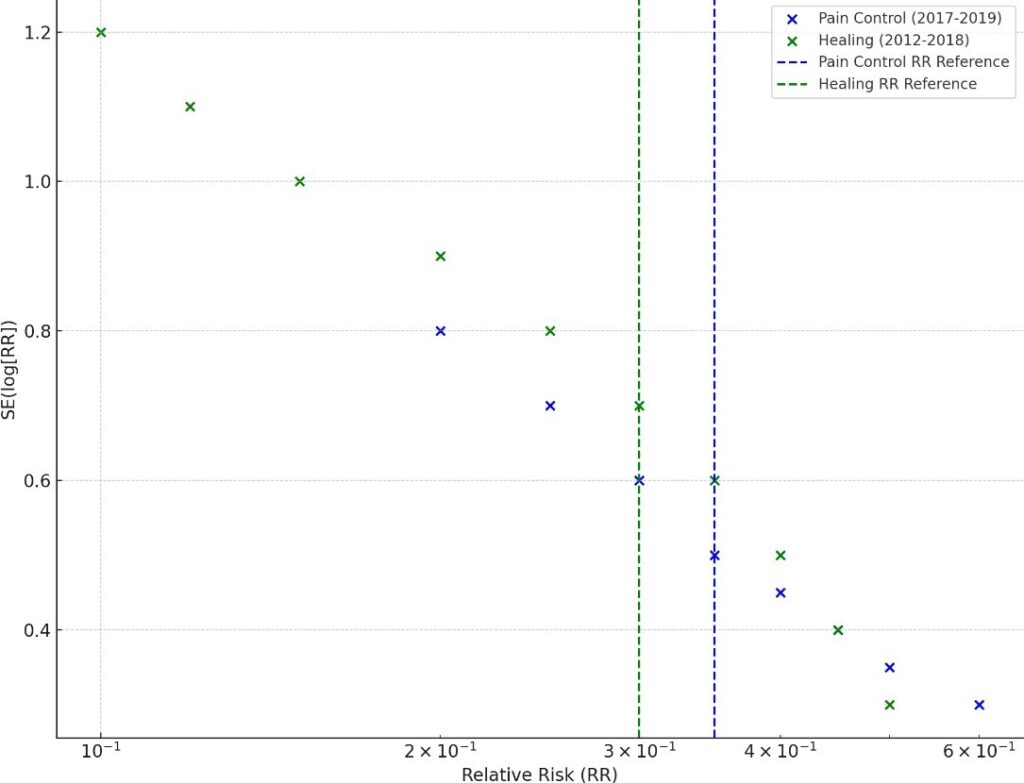Review
Utilizing Low-Intensity Light Therapy to Promote Healing and Alleviate Post-Surgical Pain: A Comprehensive Systematic Review and Meta-Analysis
Rafaela Nonato de Menezes a*, Natália de Lima Melo b, Marcio Silva dos Santos Junior c, Aline Pinto Monteiro Costa Sousa d, Elisângela de Lavor Farias e, Danilo Ferreira de Sousa f
a Nutritionist. Centro Universitário de Juazeiro do Norte – UNIJUAZEIRO.
b Master in Health Sciences from the Faculdade de Medicina do ABC (FMABC) in the area of Public Health. Professor at Faculdade Estácio de Juazeiro.
c Physiotherapist. Faculdade Adventista da Bahia.
d Dentistry, Universidade Federal do Ceará.
ARTICLE INFO
Edited by Dr G Liu
Keywords:
Low-intensity
Postoperative pain
Wound healing
Meta-analysis
Highlights
- The level of determination of trials and other interventions can be carried out for other possible circumstances, as there is literature for the performance, as well as there is a need to carry out controlled clinical trials to determine the possible confounding results that give in the different profiles of patients.
ABSTRACT
This study aimed to evaluate the effectiveness of low-intensity phototherapy in managing postoperative pain and promoting wound healing through a systematic review and meta-analysis following PRISMA guidelines. Studies were included without time restrictions, provided at least the abstract was available, and searches were conducted in multiple databases: CGF Specialized Register of Controlled Trials, Cochrane Central Register of Controlled Trials, MEDLINE (via Ovid), CINAHL (via EBSCO), Latin American and Caribbean Health Sciences Information Database, Science Citation Index-Expanded, and PubMed. Using the search strategy (“pain control” OR “wound healing”) AND “low-intensity light therapy,” 1,640 studies were identified, of which 21 met the inclusion criteria. Data were analyzed using Review Manager 5 software, employing random-effects models (Mantel-Haenszel) with a 95% confidence interval and a significance level of 0.05.
Results indicated that low-intensity laser therapy was effective in pain control and wound healing, with a significant protective effect (p < 0.05). The findings support the potential of laser therapy as a postoperative intervention, though further controlled clinical trials are needed to address confounding factors related to patient profiles and differing methodologies, as well as to explore its applicability in other clinical scenarios supported by existing literature.
Article
Moreover, tailored nutritional interventions can directly impact pain perception and management. Diets rich in anti- inflammatory compounds, such as those found in fruits, vegetables, and fatty fish, may reduce systemic inflammation and improve pain thresholds. Protein intake, in particular, supports muscle repair and maintains metabolic stability during recovery18,19. The research was inspired by the advancements promoted by the American Academy of Dermatology in innovative treatments focused on tissue regeneration and skin health. Renowned for its leadership in dermatological research and its support for emerging therapeutic technologies, the institution has emphasized the importance of non-invasive approaches, such as low-intensity light therapy, to enhance wound recovery and pain relief. This approach reflects a commitment to evidence-based practices and advancements that promote more effective and accessible care.

0147-6513/© 2025 The Authors. Published by Elsevier Inc. This is an open access article under the CC BY license (http://creativecommons.org/licenses/by/4.0/).

